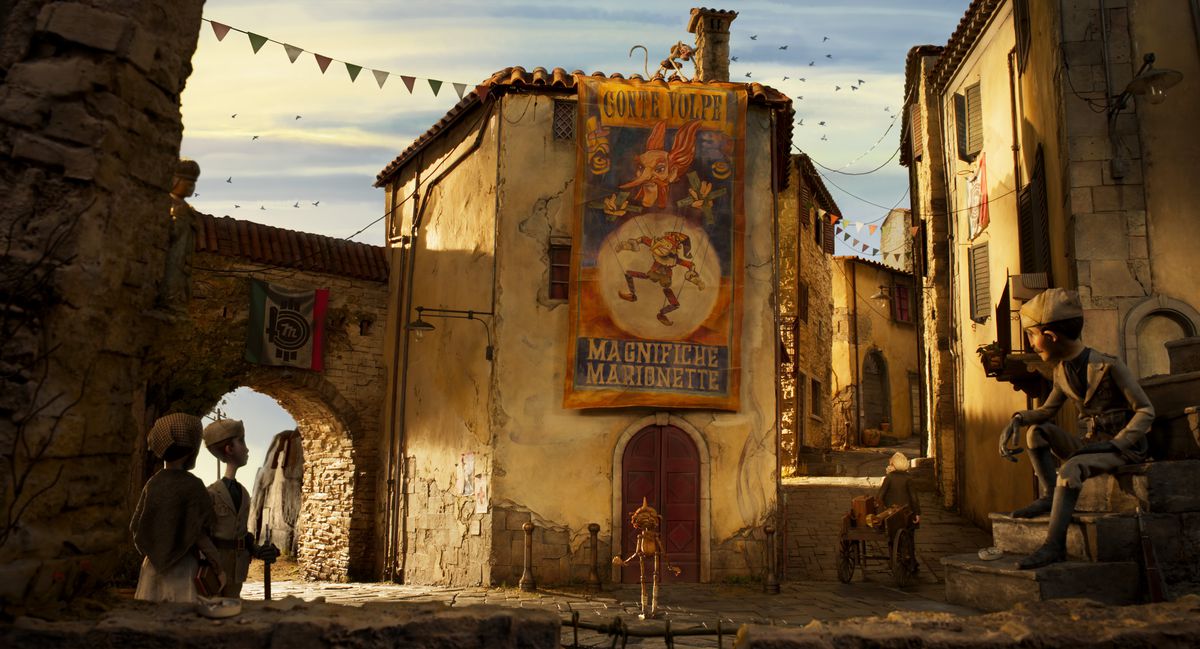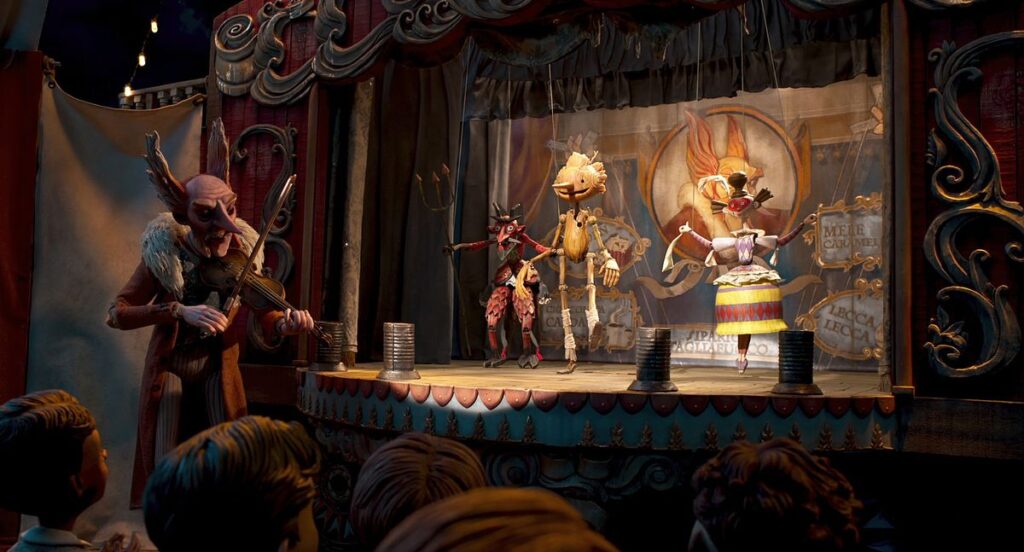Guillermo del Toro, the Mexican director of Pan’s Labyrinth, The Shape of Water, and Pacific Rim, has always been an animator. But Guillermo del Toro’s Pinocchio, out now on Netflix, is his first animated feature film, arriving 30 years into his career. Things could have been very different. Back before he made his debut with the 1992 vampire film Cronos, del Toro was actually prepping a full-length stop-motion animated film.
“I started on animation,” del Toro tells Polygon. “The earliest Super 8s I did were animation. I had an animation and effects company for 15 years. We did commercials. I started the stop-motion movement in my city. I taught stop-motion, and I was preparing a stop-motion movie before Cronos.”
Then disaster struck. “My brother, my then-girlfriend and I, we fabricated 120 puppets in clay. We did the sets. And one night, we went to dinner and to a movie. And when we came back, our place had been burglarized. They had destroyed every puppet, they had pooped and peed on the floor. And I turned around — it was three years of work — and I said, ‘I’m gonna do Cronos. I’m gonna do a live-action movie.’”
Image: Netflix
It must have been a devastating blow. It took decades for del Toro to find his way back to the medium, although his return seemed inevitable: As he characterizes it: “Since then, I’ve been taking a very deliberate detour back to animation.” The “detour” included co-directing some episodes of his Netflix CGI animated series, Trollhunters, and employing considerable practical creature effects and CGI sequences in his live-action films. “If you know Pacific Rim, you’ve seen 45 minutes of animation directed by me,” he points out.
But for his entire creative life, one project has lingered in his mind that, he felt, had to be done solely in animation, and stop-motion animation at that: Pinocchio. For del Toro, Carlo Collodi’s 19th-century tale of a wooden puppet brought to life was perfect for the medium, and he couldn’t understand why nobody else had done it yet.
“The first idea I had when I was a kid was to do it in stop-motion, because I thought that way, the humans and [Pinocchio] exist in the same world,” he says. “The most difficult element of design to solve in a Pinocchio movie is that Pinocchio and the humans need to feel like they belong in the same universe, and of course, the stop-motion solves everything.”
Del Toro resolved to finally make his stop-motion Pinocchio 15 years ago. The majority of that time elapsed just trying to get the film funded; before Netflix, everybody turned him down. It was too uncommercial, too strange, too awkwardly situated between family and adult audiences to be marketable. Once finally underway, the film took almost a full three years to make: Production started in early 2020, simultaneously with del Toro’s previous movie, the noir drama Nightmare Alley.
That sounds like a headache, but del Toro found directing both movies at once “delicious,” aided by the way production on a stop-motion film ramps up slowly, as dictated by the steady pace at which the puppets, props, and sets can be manufactured.

Image: Netflix
“The thing to understand is, you don’t start with all the units on animation. You start with one unit. And you’re generating X number of frames a day. Then you double that. And now you’re directing two units and double the number of frames, then you generate four units, and you’re generating four times. And eventually, we ended up with 65 units, more or less.”
The end result is “a massive operation that ends up covering a thousand days of shoot,” but the buildup is slow. While he was shooting Nightmare Alley, del Toro could start and end the day with detailed instructions for the creation of just a handful of frames of animation, which he found focused and refreshed him. “I loved it. Loved it! It was almost a relief,” he says. “It really was incredibly beautiful. You know, launching animation is so minute, because you have to dictate certain gestures. And you have to explain the emotional state of the puppet, and the physical state of the puppet, and where you are in the story. That drags you right back into the movie.”
Del Toro says he “intends to continue” making animated movies, but as he well knows, fate may intervene. Pinocchio wasn’t supposed to be his first stop-motion movie; who can say whether it will be his last? “It’s never happened in the order I wanted it,” he says. “That’s why we carried this movie for about 15 years. It never happens when you want it, but it happens when it has to happen.”

